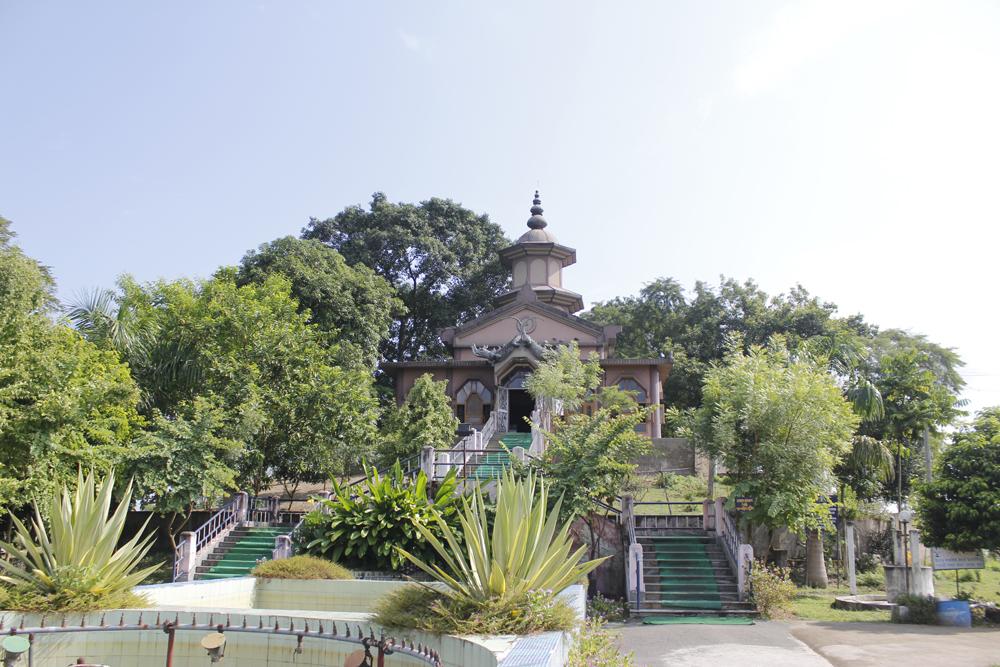Rahul Gandhi prevented from visiting Batadrava Than Significance of this Assam shrine (Indian Express)

- 24 Jan 2024
Why is it in the News?
Congress leader Rahul Gandhi recently prevented from visiting Assam’s Batadrava Than, where he was going as part of his Bharat Jodo Nyay Yatra.
What is the Batadrava Than?
- The Batadrava Than, or Bordowa Than, is a temple complex at the birthplace of revered Vaishnavite reformer-saint Srimanta Sankardeva (1449-1568).
- Located in Nagaon district, the Batadrava Than, or Bordowa Than, is one of the most sacred sites for Assamese Vaishnavites.
- Sankardeva founded the first-ever Kirtan Ghar at Bordowa in 1494 AD to practise and preach the neo-Vaishnavite faith during the fifteenth century in Assam and propagated the Ek Saran Naam Dharma.
- Various structures within the campus include Natghar (drama hall), Alohighar (guest room), Sabhaghar (assembly hall), Rabhaghar (music room), Hatipukhuri, Aakashi Ganga, Doul mandir (festive temple), and more.
- There is also a mini-museum displaying historical articles and artefacts.
- Bordowa Than has a history of disputes over ownership, leading to its division into two satras: Narowa and Salaguri. In 1958, it was reunified under the banner of 'Bordowa Than,' with both former Satras combined, and a single Namghar was established.
What was Srimanta Sankardeva’s Philosophy?
- He propagated the Ek Saran Naam Dharma.
- The Ek Saran Naam Dharma focussed on worship in the form of bhakti (devotion) to Lord Krishna, through singing and congregational listening of His name and deeds.
- Sankardeva espoused a society based on equality and fraternity, free from caste differences, orthodox Brahmanical rituals and sacrifices.
- His teaching focused on prayer and chanting (naam) instead of idol worship. His dharma was based on the four components of deva (god), naam (prayers), bhakats (devotees), and guru (teacher).
- The Neo-Vaishnavite reformist movement that Sankardeva started is behind the monastic institutions called Thans/Sattras that dot Assam.
- As the saint travelled across Assam, spreading his teachings, these Sattras/Thans were established as centres of religious, social and cultural reforms in the 16th century.
- Today, the Sattras promulgate Sankardeva’s unique “worship through art” approach with music (borgeet), dance (xattriya) and theatre (bhauna).
- Each Sattra has a naamghar (worship hall) as its nucleus and is headed by an influential “Sattradhikar”.
Literary Contributions:
- Srimanta Sankardev's significant literary works include 'Kirtan Ghosa' and 'Gunamala.'
- He is credited with composing sacred songs known as 'Borgeet.'
- His penned dramas, recognized as 'Ankia Naat,' featured Sattriya Dance as an integral component during that era.
- In these 'Ankia Naats,' Srimanta Sankardev employed a narrative style through drama, often portraying the lives of Lord Krishna and Lord Rama.
- His inaugural dramatic piece was 'Chihnajatra,' followed by others like 'Kaliya Daman' and 'Patni Prasad.'
- Remarkably, at the age of twelve, when he commenced formal education, he crafted a poem extolling Lord Vishnu titled 'Karatala Kamala Kamala Dala Nayana.'
- Notably, during this early phase, he composed the poem using only consonants, having not yet learned about vowels.
